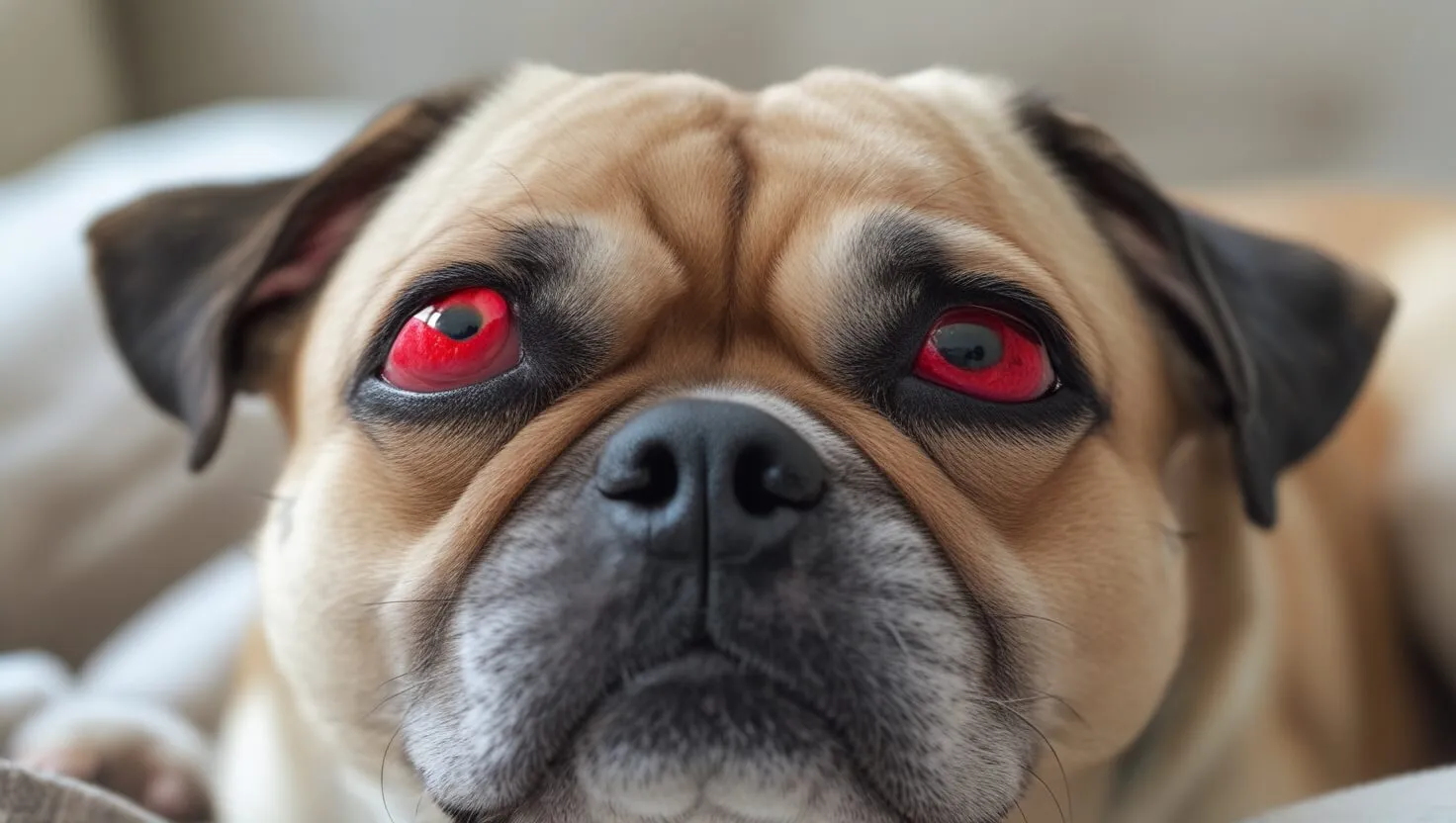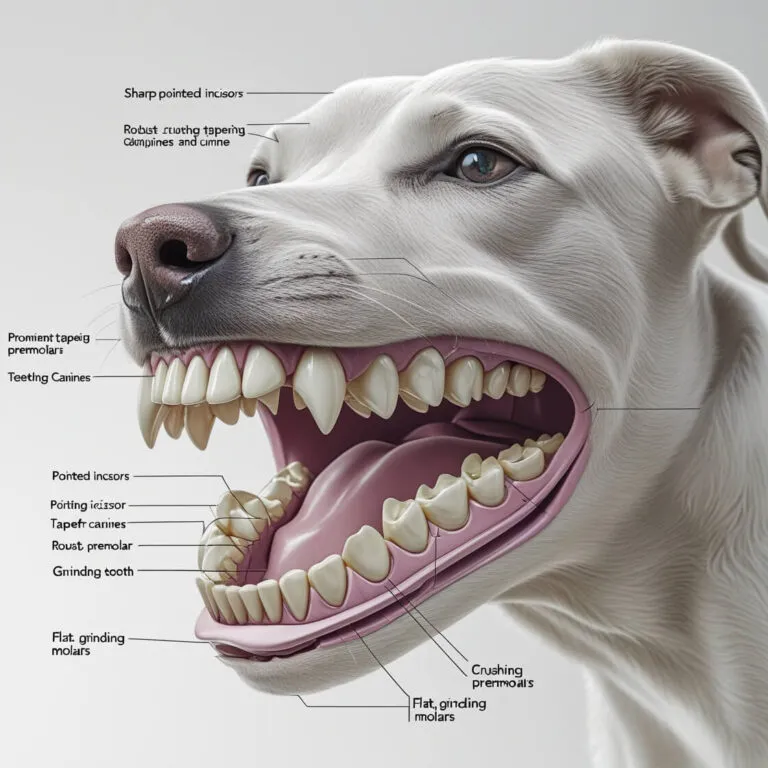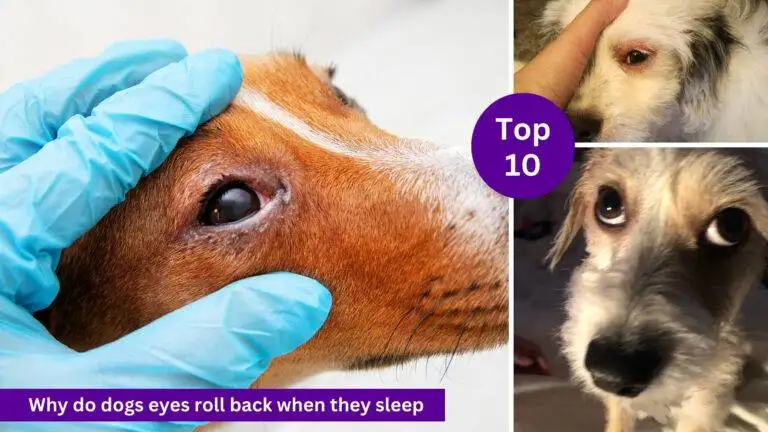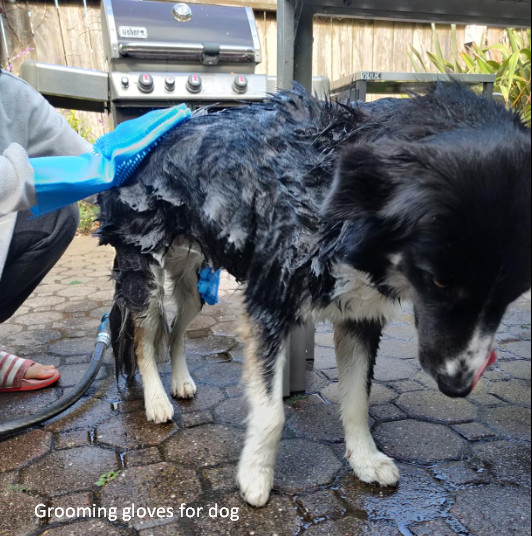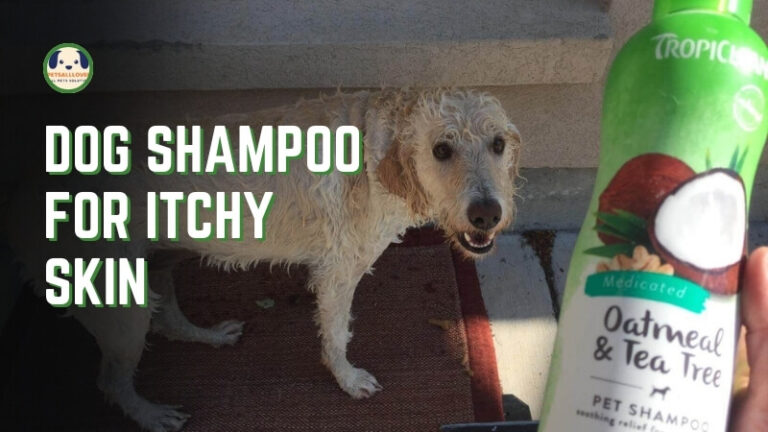Why are my dogs eyes red around the outside? Causes & Fixes tips
Why Are My Dogs Eyes Red Around the Outside?
If you’ve been asking, Why are my dogs eyes red around the outside?, you’re not alone. Many dog owners notice redness around their pet’s eyes from time to time, and it can be concerning. Redness in a dog’s eyes could be caused by a variety of factors, ranging from mild irritations like allergies to more serious conditions like infections.
It’s essential to understand the cause of the redness to help your dog feel better and ensure their eyes remain healthy. In this guide, we’ll cover the common reasons why your dogs eyes might be red around the outside and what you can do to treat it. Whether it’s a minor issue or a sign that medical attention is needed, we’ll walk you through the steps to take for your dog’s eye health.
Common Causes of Redness Around a Dog’s Eyes
If you’re wondering, Why are my dogs eyes red around the outside?, the cause could range from something simple to more serious health concerns. Redness around a dog’s eyes is usually a sign of irritation, but identifying the specific cause can help you decide the right course of action. Here are some common reasons for red eyes in dogs:
1. Allergies
Dogs, like humans, can suffer from allergies that cause irritation, especially around their eyes. Common allergens include:
- Pollen (seasonal allergies)
- Dust or dust mites
- Certain foods (like grains or proteins)
- Environmental pollutants (such as smoke or chemicals)
When your dog’s immune system reacts to these allergens, it can lead to redness, itching, and watery eyes.
2. Infections
Infections are one of the most common reasons for red eyes in dogs. They can be caused by bacteria, viruses, or fungi and may lead to conjunctivitis (inflammation of the eye lining). Symptoms of an eye infection include:
- Swelling around the eyes
- Thick or watery discharge
- Squinting or excessive tearing
If you notice any of these signs, it’s important to consult a vet to get a proper diagnosis and treatment.
3. Dry Eyes (Keratoconjunctivitis Sicca)
Dry eyes occur when your dog’s eyes do not produce enough moisture, leading to irritation and redness. This condition can cause:
- Redness around the outside of the eyes
- A gritty or uncomfortable feeling for the dog
- Discharge from the eyes
Certain breeds, such as Bulldogs and Shih Tzus, are more prone to dry eyes due to the shape of their eyes.
4. Environmental Irritants
Sometimes, external factors can cause redness around your dog’s eyes. These irritants may include:
- Smoke from cigarettes or fires
- Strong perfumes or chemicals
- Airborne particles like dust or sand
Even something as simple as a windy day can cause irritation and redness, especially if your dog has sensitive eyes.
5. Injury or Trauma
If your dog has scratched their eye or experienced some other form of injury, it can lead to redness and swelling. Be sure to check for any visible scratches or wounds around the eyes and keep an eye out for symptoms of infection. If there’s any trauma, it’s important to take your dog to the vet immediately.
6. Breed-Specific Issues
Certain dog breeds are more prone to eye problems. For example:
- Bulldogs and Pugs often have eyes that protrude, making them more susceptible to irritation and infections.
- Shih Tzus and other brachycephalic (flat-faced) breeds may have more delicate tear ducts and may experience chronic eye issues, including redness.
It’s essential to be aware of breed-specific health issues when it comes to your dog’s eye health.
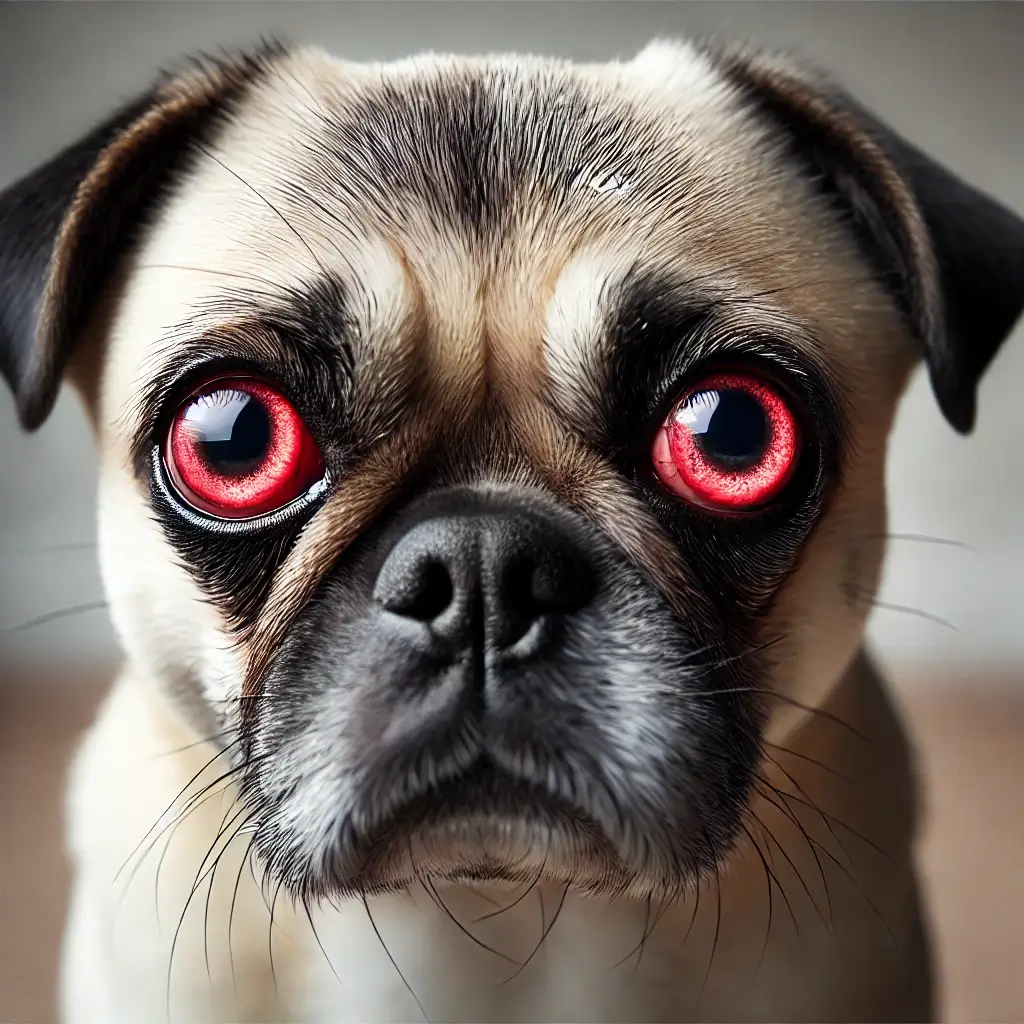
What Are the Symptoms to Watch For?
If your dog’s eyes are red around the outside, it’s important to monitor for other symptoms that could help determine the cause of the redness. Why are my dogs eyes red around the outside is only the first clue—observing other signs can guide you to the right action. Here are some symptoms to watch for that can indicate whether the issue is minor or requires veterinary attention:
1. Excessive Tearing or Discharge
If your dog has watery eyes or thick, colored discharge, this could be a sign of an infection, allergies, or even dry eyes. Normal tears are usually clear, but if the discharge is yellow, green, or cloudy, it’s likely a sign of an infection. In this case, you should contact your vet to discuss possible treatments.
2. Squinting or Difficulty Opening the Eyes
If your dog is squinting or seems to have trouble opening their eyes fully, this could be a sign that they are experiencing discomfort or pain. Squinting often indicates irritation, injury, or a more serious condition like an eye infection. Keep an eye on your dog’s behavior and consult your vet if squinting persists.
3. Rubbing or Scratching the Eyes
Dogs instinctively rub their eyes when they feel discomfort. If your dog is constantly pawing at their face or rubbing their eyes against furniture or the floor, it could be a sign that their eyes are irritated or itchy. This behavior is often seen in cases of allergies or eye infections.
4. Swelling or Puffiness Around the Eyes
If you notice swelling or puffiness around your dog’s eyes, it could be a sign of an allergic reaction, an infection, or injury. Swelling may cause additional discomfort and could make it harder for your dog to see properly. If the swelling doesn’t go down within a day or two, it’s a good idea to consult your vet.
5. Sensitivity to Light (Photophobia)
If your dog avoids bright light or seems more sensitive to sunlight than usual, it could be a sign of eye pain or irritation. This sensitivity is often associated with eye infections or conditions like uveitis (inflammation of the inner eye) or glaucoma.
6. Behavioral Changes
If your dog is suddenly more lethargic or appears to be in pain, this could be a sign that something more serious is going on with their eyes. Dogs are generally very good at hiding pain, so any noticeable changes in their behavior, especially if they seem less active or withdrawn, should be taken seriously.
7. Redness Spreading or Worsening
If the redness around your dog’s eyes is spreading, getting worse, or doesn’t improve after a few days, this could indicate a more serious underlying issue, such as an infection or a chronic condition. If you notice these changes, it’s important to consult with your vet as soon as possible.
When Should You Consult a Vet?
If your dog’s eyes are red around the outside, it’s important to monitor the situation closely. While some causes of redness may resolve on their own, others require professional veterinary care. Why are my dogs eyes red around the outside? can have various answers, but if you notice any of the following signs, it’s time to reach out to your vet:
1. Persistent Redness
If the redness around your dog’s eyes doesn’t improve after a few days or keeps coming back, it may indicate a more serious underlying condition. Whether it’s an allergy, infection, or another health issue, prolonged redness is a sign that something needs to be addressed by a professional.
2. Increased Discharge or Swelling
If your dog’s eyes are not only red but also producing a thick, yellow or green discharge, or if you notice swelling around the eyes, these could be signs of an infection or other eye condition. Swelling might also indicate a more severe problem, such as an abscess or blocked tear duct.
3. Difficulty Opening Eyes
If your dog seems to be squinting or having trouble keeping their eyes open, it could mean they’re experiencing significant discomfort. Dogs often try to shield their eyes when they’re in pain, so if this behavior continues, it’s important to seek professional help.
4. Sensitivity to Light
If your dog becomes sensitive to light or is avoiding bright spaces, this could indicate an eye problem like inflammation or a more serious condition such as glaucoma. If your dog is showing signs of photophobia (sensitivity to light), it’s essential to get them examined by a vet.
5. Changes in Behavior or Lethargy
If the redness around your dog’s eyes is accompanied by changes in behavior—such as being more lethargic, not eating, or seeming generally unwell—this may be a sign of a more severe issue. When a dog starts acting out of character, it’s crucial to get them checked out.
6. Pain or Visible Injury
If you notice that your dog is rubbing their eyes excessively, or if you suspect an injury, immediate veterinary attention is necessary. Even minor trauma to the eye area can lead to infection or more serious complications, so don’t wait too long to get treatment.
7. If the Dog is a High-Risk Breed
Certain dog breeds are more prone to eye issues, such as Pugs, Bulldogs, and Shih Tzus. These breeds may experience eye problems more frequently due to their facial structure. If you own one of these breeds and notice redness, it’s a good idea to consult your vet even if the symptoms appear mild.

Home Remedies and Tips
If you notice that your dog’s eyes are red around the outside, there are a few steps you can take at home to help soothe the irritation and prevent the issue from worsening. However, it’s important to remember that these home remedies are only for mild cases. If symptoms persist or worsen, consult a vet immediately. Here are some safe and simple tips to help your dog’s red eyes:
1. Gently Clean the Area
Sometimes, debris or discharge around the eyes can cause irritation. Use a clean, damp cloth to gently wipe away any crust, discharge, or dirt from around your dog’s eyes. Be careful not to apply too much pressure, as their eyes can be sensitive. Always use a soft cloth and lukewarm water to avoid further irritation.
2. Keep the Environment Clean
Dust, pollen, or smoke in the environment can contribute to eye irritation. Try to reduce allergens in your home by:
- Keeping windows closed during allergy season
- Using air purifiers to reduce dust and pollutants
- Avoiding smoking or strong chemicals around your dog
By maintaining a clean environment, you can help minimize the chance of your dog’s eyes becoming irritated again.
3. Use Dog-Safe Eye Drops
If your dog’s eyes are irritated but not infected, you may be able to use dog-safe saline eye drops. These can help rinse out any allergens or irritants in the eye, and provide temporary relief. Always check with your vet before using any products, as some human eye drops can be harmful to dogs.
4. Monitor for Allergens
If you suspect that your dog’s red eyes are due to allergies, keep track of the environment and potential allergens. Pay attention to things like:
- Seasonal changes (pollen)
- Specific foods or treats
- Dust or mold in the home If you notice that your dog’s eyes become red after being exposed to certain allergens, you may want to discuss an allergy treatment plan with your vet.
5. Provide Proper Hydration
Ensure your dog is drinking plenty of water, as dehydration can sometimes contribute to dry eyes and irritation. Proper hydration will help keep their eyes moist and reduce the risk of further discomfort. If you’re unsure how much water your dog should be drinking, consult your vet for guidance.
6. Protect from Wind and Sun Exposure
If your dog’s eyes are red due to irritation, try to limit their exposure to windy conditions or bright sunlight. This can cause further discomfort, especially for dogs with sensitive eyes. Keep your dog in a cool, shaded area to give their eyes a chance to heal.
7. Use a Humidifier
If your home is very dry, using a humidifier can help to keep the air moist, which may prevent your dog’s eyes from becoming dry and irritated. This can be especially helpful during the winter months when indoor air tends to be drier.
Breeds More Prone to Eye Issues
Some dog breeds are more likely to experience eye problems, including redness around the eyes. If your dog belongs to one of these breeds, it’s important to keep a closer eye on their eye health. Why are my dogs eyes red around the outside? can be more common in certain breeds due to their unique eye structures or predisposition to specific conditions. Here are some breeds that are more prone to eye issues:
1. Pugs
Pugs are known for their adorable, wrinkled faces and large, prominent eyes. Unfortunately, their eye shape makes them more susceptible to irritation, dryness, and injury. The eyes of a Pug often protrude slightly, which can increase the chances of developing issues like:
- Dry eye (keratoconjunctivitis sicca)
- Corneal ulcers
- Redness and irritation
2. Bulldogs (English, French, etc.)
Bulldogs, whether English or French, are another breed prone to eye problems. Their unique face structure, with short noses and prominent eyes, can lead to a variety of issues:
- Eye infections (due to the folds around their face trapping moisture and bacteria)
- Dry eyes
- Conjunctivitis (inflammation of the eye lining)
These dogs also tend to have more skin folds around their eyes, which need regular cleaning to prevent irritation and infection.
3. Shih Tzus
Shih Tzus are another breed with prominent eyes that can be prone to issues like:
- Dry eye
- Allergies that affect the eyes
- Conjunctivitis
- Tear staining (which can cause redness around the eyes)
Regular eye care and cleaning are essential to prevent irritation and infection in Shih Tzus.
4. Cavalier King Charles Spaniels
This breed is known for its large, expressive eyes, but they are also more prone to eye conditions, including:
- Progressive retinal atrophy (PRA)
- Dry eye
- Cherry eye (a prolapsed gland in the eye)
Because of their delicate eyes, regular vet checkups are crucial for these dogs to detect issues early.
5. Dachshunds
Dachshunds, with their long bodies and short legs, are also at a higher risk for eye issues. These include:
- Cataracts
- Retinal problems
- Eye infections due to their active and curious nature (they tend to get into things that can cause injury)
6. Boston Terriers
Boston Terriers have large, round eyes that can make them more prone to irritation and infections. They often suffer from conditions like:
- Dry eye
- Corneal ulcers
- Eye infections due to their wide-set eyes
It’s important to keep their eyes clean and moist, especially in windy or dusty environments.
7. Cocker Spaniels
Cocker Spaniels are known to have long, floppy ears that can trap dirt and moisture around their eyes. This can increase the risk of:
- Eye infections
- Conjunctivitis
- Tear staining
Routine cleaning and monitoring are necessary for maintaining their eye health.
8. Chihuahuas
Chihuahuas, especially those with large eyes, can be prone to:
- Eye infections
- Dry eyes
- Irritation from environmental factors
Because of their size and delicate nature, small dogs like Chihuahuas require extra care to prevent eye issues.
Frequently Asked Questions (FAQs)
Here are some common questions dog owners often have when dealing with redness around their dog’s eyes. If you’re wondering, Why are my dogs eyes red around the outside?, these FAQs will help clarify some important aspects and guide you in taking the right steps.
Why are my dogs eyes red and swollen?
Redness and swelling around your dog’s eyes could be caused by allergies, infections, or an injury. If the swelling is persistent or accompanied by discharge, it’s important to consult your vet. Swelling may also indicate an eye infection or blocked tear ducts.
Can allergies cause red eyes in dogs?
Yes, allergies are a common cause of red eyes in dogs. Environmental allergens like pollen, dust, or mold, as well as food allergies, can irritate your dog’s eyes and cause redness. Keeping your dog away from allergens can help, but if the symptoms persist, you might need to consult your vet for appropriate treatment.
What should I do if my dog’s eyes are red and watery?
If your dog’s eyes are red and watery, it could be a sign of an eye infection or allergies. Start by cleaning the area gently with a damp cloth, and ensure there are no irritants in your dog’s environment. If the condition doesn’t improve within a few days or worsens, it’s important to take your dog to the vet.
How long does it take for red eyes to heal in dogs?
The healing time for red eyes depends on the underlying cause. If it’s due to a mild irritation or allergies, it may clear up within a few days. However, if an infection or injury is the cause, it might take longer and require veterinary treatment.
Why do dogs’ eyes roll back when they sleep?
Dogs’ eyes rolling back while sleeping is a relatively common phenomenon. While it can look a little strange, it’s usually not a cause for concern. This can happen when dogs are in REM (Rapid Eye Movement) sleep. To learn more about this, check out our article on Why Do Dogs’ Eyes Roll Back When They Sleep.
Conclusion
If you’ve been wondering Why are my dogs eyes red around the outside?, you now have a better understanding of the possible causes and the steps you can take to help your dog. Red eyes can be caused by a variety of factors, including allergies, infections, dry eyes, or environmental irritants. Monitoring your dog’s symptoms and knowing when to seek professional help is key to ensuring their eye health and overall well-being.
If your dog’s condition doesn’t improve with at-home care, or if you notice signs like excessive discharge, swelling, or pain, it’s important to consult with a vet. Early detection and treatment can prevent complications and help your dog recover quickly.
Always remember that while minor irritation may resolve with simple care, persistent or worsening symptoms should be addressed by a professional. Keeping your dog comfortable, monitoring their health, and maintaining regular vet check-ups will help you manage their eye health and keep them happy and healthy for years to come.
If you’re ever uncertain about your dog’s eye health, don’t hesitate to reach out to your vet for guidance and care. Your dog’s comfort and well-being are worth the extra attention.




